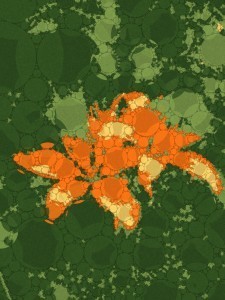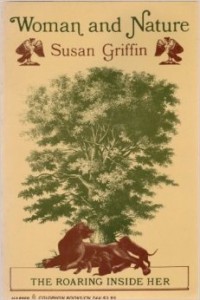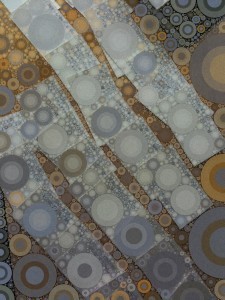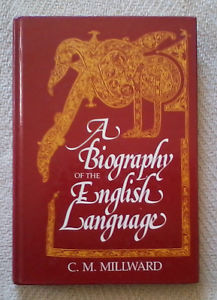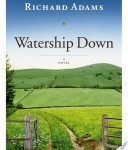Cat Rambo's Blog, page 64
February 2, 2014
Speculative Reminiscences: Weekly Recap for 2/2/2014
 I announced new online classes as well as the next round of classes and news about my teaching schedule for 2014.
I announced new online classes as well as the next round of classes and news about my teaching schedule for 2014.
For Writers:
I discussed how to write in order to have an impact on the reader and made some observations about collaborations.
Having trouble getting a non-SF reader to enjoy your favorite SF book? This may explain why.
Charles Coleman Finlay talks about the slush pile for his guest editor issue of the Magazine of F&SF.
I talked about these books:
Classic feminist text Woman and Nature: The Roaring Inside Her by Susan Griffin
Poetry collection The Essential Rumi, translated and arranged by Coleman Barks
Nonfiction book A Biography of the English Language by C.M. Millward
New space opera novel Ancillary Justice by Ann Leckie
Classic animal fantasy novel Watership Down by Richard Adams
Time Wasters!
A review of several books about the OWS movement talks intelligently about the history and implications of the movement.
Scientists discover new poems from Sappho.
G. Willow Wilson will be writing the Ms. Marvel comic.
How moles dig. Because you always wanted to know.
Some absolutely stunning photographs by Russian photographer Elena Shumilova of her children and farm animals.
Interesting Social Media Links
A piece I did for the SFWA blog on Shelfari.
Not social media related, really. but if you are working on the Internet, I strongly recommend two-factor authentication.
This video can be read as an inspiration for writers:
February 1, 2014
You Should Read This: The Serial Garden by Joan Aiken
While the stories deal with the members of the Armitage family, a wide cast of characters floats in and out of the stories: visiting wizards, fairy godmothers, a stray unicorn, mischievous cousins and envious witches.
Joan Aiken is most familiar to readers for her children’s novels such as The Wolves of Willoughby Chase and Black Hearts in Battersea. But she was a talented story writer as well, producing Dahl-esque modern day stories that often rely on supernatural elements.What: The Serial Garden: The Complete Family Armitage Stories by Joan Aiken is a collection of children’s stories written by Aiken. The Armitage family moves through a landscape reminiscent of the England of the Pevensies or Would-Be_Goods and they have the same, non-cloying sweetness to them.
Who: Read this if you’re a MG or YA author looking for inspiration. Or if you’re a parent looking for some solid reading to share with your children..
Why: Read it because Aiken knows how to construct a short story. Look at how deftly she weaves in elements, tying them all up in endings that are unpredictable but ineffably right.
When: Read it in the evenings, as befits fairy tales.
Where and How: Read it if you’re in the mind for a little gentle silliness and the ghost of a governess conducting midnight lessons.
#sfwapro
January 31, 2014
How to Critique: Best Practices for Workshopping
If you're interested in getting your stories workshopped, click on this picture in order to find out more about My Writing Fantasy & Science Fiction Stories online class. There's also an Advanced Workshop, as well as classes focusing on individual aspects of writing, like description, characters, and fleshing out stories.
Both my Writing F&SF Stories and Advanced workshops offer students a chance to critique and be critiqued. To my mind, the latter is actually more useful, because being forced to articulate one’s position on an aspect of writing can be enlightening and instructive. With that in mind, here’s some best practices for such workshops.Overall:
Start with what works. Let the writer know what you see as the story’s strengths and how they might capitalize on them.
What keeps you from connecting with the story? What don’t you understand? Sometimes the most useful thing you can give someone is a brief synopsis of what you think is going on in the story, because it may not match their intent.
Critique big ticket items, not little nitpicks.
It’s more important to point out what’s broken than to make suggestions how to fix it, because that fix will differ radically from writer to writer.
How do the beginning and ending work together to create a satisfying story? Is the story that’s provided the one the one promised in the beginning? Is the ending set up in a satisfying way? Is it the result of character actions?
What’s missing? What don’t you understand?
What seems extraneous, unneeded or distracting?
What’s the pacing like? Where does the story drag and where does it skip too quickly through details?
Where are the info-dumps and how can that information be spread out?
How well does the title work? If not well, what possible better titles can be drawn from the story?
Characters:
Are the characters likeable?
Are the characters acting or reacting?
Does the character have a point of identification with the reader, such as a problem, situation or want that both of them hold?
Where can we go deeper into the character’s head? Does the reader know what the character wants? Where don’t we understand what the character is doing?
Are there too many characters? Can any be combined?
Is the dialogue interesting and informative of character?
Is the point of view consistent?
World:
Is the world clear? Does the reader know where they are?
Does it feel generic? (Is it?) How can it be made more specific and evocative?
Does it make sense?
How important is the science of it? Are the facts right?
Where should we know more?
Where can the world come forward more?
Where can more sensory detail be worked in?
Is the culture interesting and also make sense?
You Should Read This: Woman and Nature by Susan Griffin
She knew her skill and she knew it well. She could speak more than one language. She spoke their language, and she spoke hew own, which they could not speak.
What: Poetry and meditative essay mingle in Woman and Nature: The Roaring Inside Her by Susan Griffin. I found this book in grad school when I was first learning to look into metaphors to find out what they contained.Who: Read this if you’re a woman, whether or not you call yourself a feminist. Read it if you’re a man trying to write realistic women, because the structures Griffin talks about are ones that affect all of this, but particularly women. Read it if you don’t mind some poetry mixed in with your thinking.
Why: Read this to reexamine the words and metaphors we use to describe both nature and women, to understand the attitudes behind the language.
He says that woman speaks with nature. That she hears voices from under the earth. that wind blows in her ears and trees whisper to her. That the dead sing through her mouth and the cries of infants are clear to her. But dfor him this dialogue is over. He says he is not part of this world, that he was set on this world as a stranger. He sets himself apart from woman and nature.
And so it is Goldilocks who goes to the home of the three bears, Little Red Riding Hood who converses with the wolf, Dorothy who befriends a lion, Snow White who talks to the birds, Cinderella with mice as her allies, the Mermaid who is half fish, Thumbelina courted by a mole.
When: Read this when you want to be lulled by words out of your own body and into the material forms of tree and earth and shell.
Where and how: Read this near a window, where you can look out at trees or sky or mountains or water.
#sfwapro
January 30, 2014
Teaser From Cathay of Chaos
If you're interested in finding out how to create effective, engaging characters, check out my "Building Characters" class or the Dialogue mini-class. Click "Take an online class with Cat" to find out more about the class.
Lately a couple of stories have arrived in the form of characters. One is Laurel Finch, the little girl in this steampunk snippet, which is tentatively titled “Laurel Finch, Laurel Finch, Where Do You Wander?”. The other is this one, Cathay the Chaos Mage, who is wandering through a city that’s been in my head for a while now, Serendib.Cathay was a Chaos Mage and didn’t care who knew it. Fear and envy were fine emotions to set someone spinning into a roil, and Cathay could sip from that cup as easily as any other. She dressed sometimes in blue and other times in green or silver or any other color except black. Her sleeves were sewn with opals and moonstones and within their glitter here and there another precious stone, set in no particular order, random as the stars.
A love of gambling was part of Cathay’s definition, and so she often wandered through the doorways of Serendib’s gaming houses, whether they were the high-tech machines of the Southern Quarter or the games of chance and piskie magic played in the alleys across town, in one of the neighborhoods where magic reigned.
Cathay stumbled into Serendib through a one-time doorway, like so many others. She was walking in a wood one moment, and then her foot came down and she was in a city. It made her laugh with delight, the unpredictability of it all, and she soon learned that she had come to the best possible place for a Chaos mage, the city of Serendib, which was made up of odd pockets and uncomfortable niches from other dimensions, a collision of cultures and technologies and economies like no other anywhere.
When she arrived in the city, she had three seeds in her pocket, and so she found an empty lot, precisely between a street where water magic ruled, in constant collision with the road made of fire and iron, so daily fierce sheets of steam arose, driving the delicate indoors and hissing furiously so it sounded as though a swarm of serpents was battling. She dug a hole with her little finger, and then one with her thumb, and a third by staring at the dirt until it moved. Into each she dropped a seed, and covered it up, and sat down to wait.
It was not long till the first inquisitive sprout poked through the dirt, followed by a second. She waited for the third, but it was, by all appearances, uninterested in making an appearance. She shrugged; two were enough for now.
You Should Read This: The Essential Rumi (Coleman Barks translation)
He was not bits of husk, or a puddle that freezes overnight or a comb that cracks when you use it, or a pod crushed open on the ground. He was fine powder in a rough clay dish. He knew what both worlds were worth: a grain of barley.
I first discovered Rumi’s work when I was in graduate school. It spoke to me in a way that few other poems had, seeming to pluck out the questions I had and showing me that the answer was already there.What:Translation is an art form, and Coleman Barks’ translation does the poet justice. Rumi was a 13th century Persian mystic poet who may well be the most popular poet in America, given how often lines of his poetry show up on Pinterest.
Rumi may be the most pinned poet of all time.
Who: I cannot think of anyone who would not benefit from this book, particularly if you like poetry.
Why: Read this if you’re interested in simple language presenting wild and wonderful ecstasy. Read it if you’re wondering where you belong in the world or what you should be doing in it. Read it for lines that will linger with you.
When: Read this when you are first falling in or out of love. Read it when your soul is thirsty.
Where and how: Read this in intervals, taking time to savor each piece and turn it over in your head.
#sfwapro
January 29, 2014
Teaser From Another Unfinished Steampunk Story
If you're interested in my steampunk stories, you might start with "Clockwork Fairies," which originally appeared on Tor.com
I’ve been writing a lot in a steampunk world lately; this is the fourth story set in this world. The passengers are headed to Seattle, but a version much grimier and war-ridden than our own. The Civil War is three years over; another war, over a substance called phlogiston, has arisen.Jemina noticed the Very Small Person the moment she entered the train.The child paused in the doorway to survey the car before glancing down at her ticket and then at the other half of the hard wooden bench, high-backed, its shellac peeling, that Jemina sat on. Jemina tucked the macrame bag beside her in with her elbow.
The child was one of the last on, which was why Jemina had been hoping against hope to have the bench to herself, at least all the two day trip to Kansas city. The train began to roll forward, a hoot of steam from the engine, a bell clang from the caboose at the back of the train, the rumble underfoot making the little girl pick her way with extra caution, balancing the small black suitcase in one hand against the pillowy cloth bag in the other.
She arrived mid-car beside Jemina and nodded at her as she struggled briefly to hoist her suitcase up before the elderly man across the man did it for her. She plumped the cloth bag in the corner between sidearm and back and sat down with a little noise of delight as she looked around. Catching herself at the noise, she blushed, fixed her gaze sternly forward as she folded her hands in her lap, and peeped at Jemina sidelong.
Jemina tried to imagine how she might appear. She knew herself thin but nicely dressed and pale-skinned. The lace at her throat was Bruges, the cross around her neck gold. She looked like a school-teacher, she imagined, and not a particularly nice one. She felt her lips thin further at the thought.
The child, interpreting the flattening of Jemina’s mouth for disapproval, fished in her bag and took out a small blackbound Bible. She began to read.
“Oh, it’s all right,” Jemina said. Her boldness surprised her, but this was a child, after all. “I’m Jemina Iarainn and I’m a scientist, headed to work at the War Institute in Seattle. Who are you are where are you going?”
The smile bestowed on her could have lit a room. The Bible slid back into the bag. “Oh thank goodness! I’m Laurel Finch and this is my very first train ride ever, up to Seattle too, and I was hoping I’d have an agreeable companion on my voyage.”
She stumbled a little over the solemnity in the last words. Jemina said, “Trips are much, much nicer with someone to talk to. Where are you going in Seattle? To visit relatives?”
“To the Soldiers’ Orphans’ Home there,” Laurel said, and her mouth drooped before she summoned her smile again. “I’ve been staying with my uncle for the last three years but he is traveling to China as an ambassador. It’s all right, he’ll come back for me, but in the meantime I’m to live there for a few years.”
“Seattle is very nice,” Jemina said. Her mind raced along the years before this child, living among orphans with no chance of adoption herself. Bleak, as bleak as any of Jemina’s childhood years. “You will meet Princess Angeline, Chief Seattle’s daughter. She lives down near the market and is a real Indian princess.”
“Do you know Seattle well?”
Jemina shook her head, then nodded. “My twin sister is out there already and she has been writing me long letters.”
“Is she also a scientist?”
“She writes for the newspaper.”
“Oh! Like Nellie Bly!” Laurel clapped her hands and Jemina sighed internally. A daredevil reporter was more exciting than a scientist, but she was the one constructing giant killing war machines, after all, even though she was not at liberty to talk about any of that.
You Should Read This: A Biography of the English Language by C.M. Millward
Our language is nuanced with a thousand historical references, even when we think it at its most innocent.
What:There’s a t-shirt that reads “English is a language that lurks in dark alleys, beats up other languages and rifles through their pockets for spare vocabulary.” In #sfwaproJanuary 28, 2014
New Online Classes!
Maneki Neko cats have become something of a trademark for me. I love their cheerful faces. You'll notice one on the cover of Creating an Online Presence.
I’ve just updated the class page, but I wanted to call out something new I’m trying, one hour “conversation” classes. In each of them, we’ll drill down to a specific aspect of writing or the business of writing. Here’s the upcoming ones:Putting It Out There: Submissions How to find, research, submit to, and track markets, including reprint markets and yearly “best of” anthologies. Wednesday, February 5, 7-8 PM PST
Speaking in Another’s Voice: Dialogue How to create authentic and entertaining dialogue that reveals character while moving the story along. Wednesday, February 12, 7-8 PM PST
Everyone is Interesting: Interviews How to research a subject and create an interview that showcases why someone is interesting. Wednesday, February 19, 7-8 PM PST
Tessellated Voices: Anthologies, Collections, and Magazines Considerations for assembling as well as submitting to anthologies and theme issues. What to think about when putting together your first collection or an anthology proposal. Tuesday, March 4, 10-11 AM PST
The Devil in the Details: Description How to write description that adds to the story and salts in necessary information without boring the reader. Sunday, March 9, 5-6 PM PST
The Choreography of Blows: Blocking How to block a scene so the reader has enough information to fill in the rest. Tuesday, March 11, 10-11 AM PST
Doing the Policeman in Funny Voices: Reading Aloud How to read to an audience, either real or virtual. Sunday, March 16, 5-6 PM PST
The standard classes are there as well, so check out the page of possibilities. Be aware that I will not be teaching during the second half of 2014, so these are your only chance to take a class with me this year.
You Should Read This: Watership Down by Richard Adams
Watership Down was always notable to me for the section on Silverweed and his brethren. It's a section where the wild rabbits are bewildered by what has happened due to human encourachement, but in some ways, it sets up the horror of General Woundwort that will follow.
Watership Down was the first of a wave of animal books that included Duncton Wood, The Book of the Dun Cow, and Tailchaser’s Song. It’s inspired an animated movie that is not terrible (bear in mind that I dislike most movies) and which has weathered the years well.What: A group of rabbits whose warren is destroyed by the bulldozers of a housing development try to find a new place to live, despite various pitfalls and traps along the way.
Who: Anyone who loves animals will love this book, and any writer interested in writing epic journeys as well as non human protagonists will find an analysis of the rabbits’ trek an instructive one.
When: Read this for immersion or when you want to share a saga with your children.
Why: Read it to see how well Adams has worked out rabbit soceity, including a vocabulary full of rabbity concepts like tharn and fabulous phoneticisms like hrududu. Read it to see the rabbit mythology and listen to the folktales told among the rabbits, very much in the same tradition as Kij Johnson’s The evolution of trickster stories among the dogs of North park after the change.
Where/how: Read it on a summer afternoon, preferably one when you can see a young rabbit or two frisking on the lawn, flicking their long ears back as they eye you whenever you flip a page.


